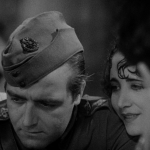 |
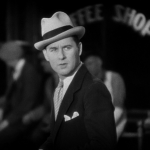 |
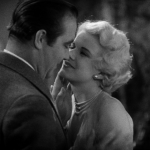 |
| Roy Rutledge James Hall |
Monte Rutledge Ben Lyon |
Helen Jean Harlow |
| Released by United Artists | Directed By Howard Hughes |
||
Proof That It’s Pre-Code
- There’s a few foul mouthed fliers here, who utter things like, “Don’t be an ass!” and “Son of a Bosch!”
- The first World War is drenched in sex.
Hell’s Angels: Die the Hero You Never Were
“Murder! That’s what this dirty, rotten politician’s war is! Murder! You know that as well as I do!”
I wholly believe that Howard Hughes is one of the most important names in classic Hollywood. This gets ignored fairly often since the boy millionaire’s life is so eclectic and so ingrained in the American mythos– and because most of his brushes with Hollywood were disastrous– but there’s little doubt that Hughes, through his independent productions, clashes with censors, and eventual ownership of RKO, ended the studio era of Hollywood history.
But that’s twenty years after today’s movie, Hell’s Angels, an early example of Hughes’ pig headishness and bravado where the young Hughes staged one of the most expensive productions of all time– $3.8 million in 1930– that endured years of reshoots and chaos. Originally a silent film, Hell’s Angels evolved from Hughes’ desire to outdo 1927’s Wings and pretty handily failing. It’s the tale of two brothers during wartime, one noble and the other not, and how that tears at them, usually with rather clunky results.
The two American brothers, honorable Roy and flippant Monte, attend school at Oxford when the first World War breaks out. Their good friend, Karl, gets called back to Germany, while Roy and Monte each enlist in the Royal Flying Corps: Roy because it’s the right thing, Monte because he’s enticed by a girl who calls him chicken for not doing it. (Sidenote: yes, that girl is a very young Marian Marsh.) In the RFC, they help bring down a zeppelin that attacks Britain and spearhead a secret mission to blow up a weapon’s depot behind enemy lines.
I’ve seen Hell’s Angels a couple of times now and I’m always surprised as to how little it adds up to. Neither Roy or Monte are particularly appealing characters, and while they may perfectly represent the type of Americans you’d have seen in the war (the rational coward and the determined fool), there’s no chemistry. The actors, Ben Lyons and James Hall, don’t resemble brothers in any way and rarely do they seem to share any familial intimacy. Neither succeed at being wholly compelling, either. Lyon’s Monte is the voice of both cowardice and self-preserving reason, only to toss this aside at several points during the film out of screenwriting necessity.
But odds are if you’ve never seen Hell’s Angels you don’t care about the part of the movie surrounding the brothers and their woes. The movie is infamous for two things: introducing a certain blonde bombshell to the world and its impressive aerial fights that cost several World War veterans their lives.
On the latter point first, the aerial combat sequences are indeed dazzling. The first sequence, a nighttime raid on London, is the more impressive of the two lengthy battles. Tinted purple to indicate it’s a nighttime raid, we first meet the attacking zeppelin and its crew discussing their plan to detonate Trafalgar Square in the heart of London. Like a lot of early-30s films, the Germans aren’t complete monsters– they’re just as hungry for glory as much as their counterparts. Karl is among them as the bombardier, though his loyalty to his old friends puts him in a moral bind.
Roy, Monte and the rest of their four plane squadron scramble to meet their invaders (… they had four planes guarding London?), and Hughes manages to capture the desperation and silence of combat so high up that makes the battle almost surreal. Because these moments were filmed in silence with sound effects added later, their ethereal quality is heightened and rendered all the more impressive.
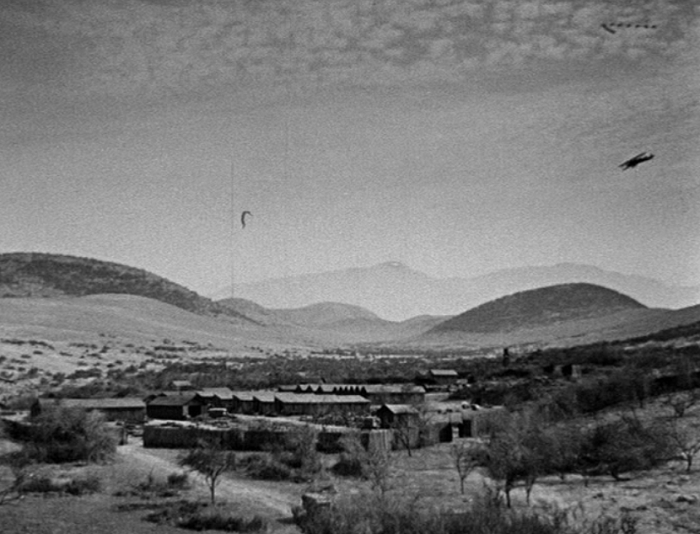
The massive scale of the aerial sequences is impressive. Check out the formation in the upper right.
Karl re-targets the bombs to have them land harmlessly in the Thames, and is congratulated for his job by having his crow’s nest being unceremoniously cut from the zeppelin. Other officers are ordered to off themselves to save the ship from the pursuing planes, and the movie doesn’t shy away from the idea that war, overall, is state condoned suicide. This fight ends when, after our leads have crashed, one daring pilot rams his plane into the fleeing Germans at their final moment of triumph, erupting into a fiery blaze from the purple tint.
The second aerial battle that pushes the film towards its climax is more instructive in the field of bombing runs than in many visceral thrills. The half of the film after the intermission lacks any colorization or tinting, making it less visually engaging than the plumes of color that haunted the film’s first portion. There are still a few stunning moments, such as a mid-air collision or simply the visceral thrill of seeing the actors from the film so clearly participating in the airborne frenzy.
But these fights, while undeniably impressive and massive for that of a 1930s film, still pale to other, similar filmed battles. In fact, the movie would probably be all but forgotten today besides its scandalous history, and, of course, for its star making moment for someone who would go on to symbolize much of early 1930s cinema.
Hello, Harlow
“Would you be shocked if I put on something more comfortable?”
I included the .gif of Jean Harlow on the right here because, honestly, every still or screenshot of her in Hell’s Angels I’ve seen simply don’t do her justice. Playing the free spirited Helen, the woman who comes between Monte and Roy, she absolutely glows with sexual desire and yearning. Look at her in that image as she first meets Monte, not even breaking eye contact as her supposed-boyfriend Roy introduces them. It’s intense.
Weirdly, Harlow’s performance here is much better than what you’d get over the next few years in pictures like The Public Enemy and The Secret Six. This film’s massive filming time must have worked to her advantage, because she’s left to simply light up the screen and does so admirably. She possesses this weird rawness about her, something that makes her seem both callous and desirable, a playgirl whose heart is only after her own, and yet the selfishness only seems to feed back into her allure.
Her character of Helen may also be the most interesting thing about the movie, a pleasure-seeker who holds little or no moral regard for the men who devote themselves to her. While Monte is a grade-A womanizer, even he is shocked and shamed by her callousness. (It doesn’t teach him a lesson, of course, because none of these characters learn anything.) Helen follows the boys to the front lines of the war by working in a canteen, and when we last see her, she’s hooking a bigger fish in the command food chain than Roy– and absolutely blasted.
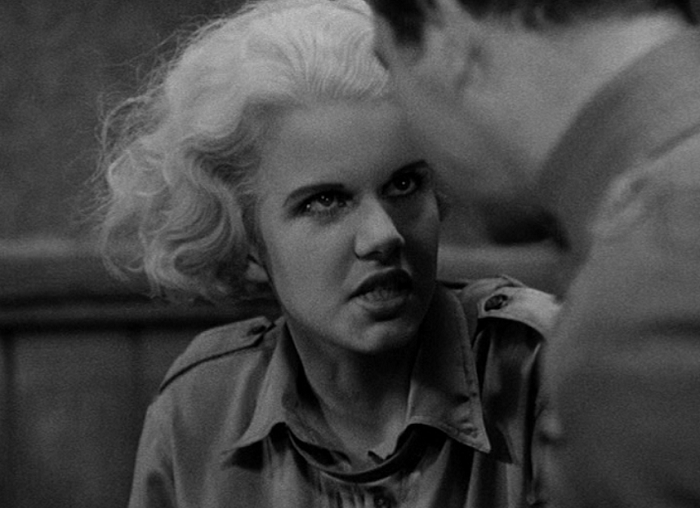
Not glowing quite as much here.
There’s no closure for her character, nor does the revelation that both Monte and Roy shared affections for Helen really lead anywhere. The film’s emotional arcs are particularly unsatisfying, though that may be by design. Karl’s death is likewise unmourned and unmentioned after it occurs, as Roy and Monte are in perpetual motion towards the next big action set piece.
There’s simply an undeniable coldness to the film’s view of the war and personal interactions. It’s a wholly unsentimental movie, with Monte’s belief that war, “doesn’t change you, just reveals who you really are” being rather prescient. Helen and Monte are selfish, able to survive and thrive by their ability to feed on others and avoid the machine of death that surrounds them. Karl and Roy are honorable, both giving their lives for what they believe in, punished by an uncaring universe for their nobility.
Factoring this into either narrative inelegance or cynical resonance from the first World War, it’s hard to find much to cheer about in the story of Hell’s Angels. But it’s visual extravagances– the battles and the star-in-the-making– turn it into an important, if clumsy, footnote in Hollywood history.
Gallery
Hover over for controls.
Trivia & Links
- TCMDB describes the film’s production:
Howard Hughes had been at work since 1927 on his first major screen effort, a picture he intended to rival the hit aviator flick (and first Best Picture Oscar winner) Wings (1927). A year and a half into the production of Hell’s Angels, Hughes had lost his wife (to divorce), two stunt pilots and a mechanic (killed filming the movie’s stunning aerial sequences), two directors (Marshall Neilan and Luther Reed; Howard Hawks and Edmund Goulding were also among those said to have worked on it), and more than $2 million. And he still had roughly 2 million feet of unedited silent footage in a market that virtually overnight was clamoring for talkies. Rather than scrap the whole thing, Hughes decided to add sound to the air footage and re-shoot the dialogue sequences. That was bad news for the film’s leading lady, Greta Nissen, a Norwegian dumped from the sound version because of her very thick accent, and good news for Jean Harlow, a fresh face on the Hollywood scene who took the opportunity to make a real impression on audiences and reviewers – at least for her looks and sex appeal, if not for what many called her “awful” acting.
- Because of the cost of filming the aerial sequences and the sheer amount of footage filmed that didn’t end up being used, Hughes would sell stock footage of this movie for reuse in other productions. This included films like Sky Devils and Ace of Aces. This movie would also make a brief appearances in the 2004 Best Picture nominee The Aviator, where Hughes is played by Leonardo DeCaprio and Harlow is played by (sigh) Gwen Stefani.
- One last bit on Hughes: this is one of only two films he’s listed as Director on, the other being the similarly lengthily delayed The Outlaw (1943), a movie that was truly the bane of censors. Hughes had filmed the movie with Jane Russell in a bra that he’d personally designed to fully show off her finer points– and there’s only so much bosom that the American public could take in the 1940s. Hughes would later buy a controlling interest in RKO Pictures in 1948, and precipitated the end of the Hollywood studio era by being the first to settle with the Justice Department over an anti-trust lawsuit, resulting in RKO selling off their theaters. Other films of Hughes, like 1954’s The French Line (which may as well have neon signs pointing to Russell’s cleavage for much of its run), continued to infuriate and agitate censor boards across the country; in fact, the Cardinal of St. Louis made it a mortal sin to see The French Line, meaning anyone who bought a ticket for the movie was automatically also buying a ticket for hell. Hughes crippled RKO’s profits and resources through micromanagement and bad business movies. He sold the studio off in 1955, where it would be reduced to a film library.
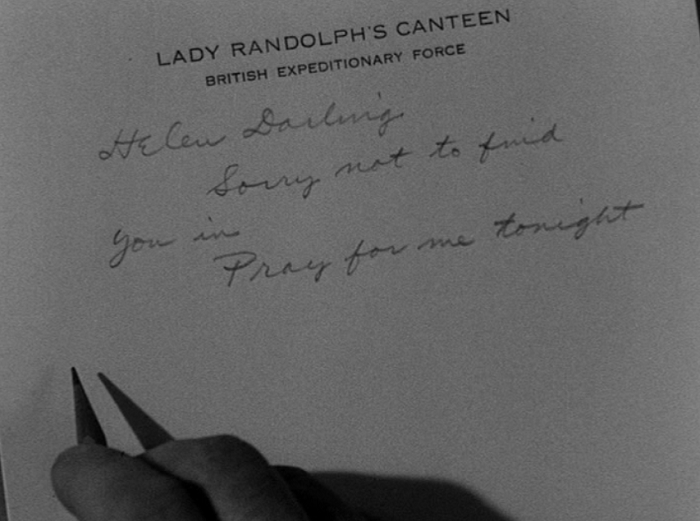
My usual reaction before watching Hell’s Angels.
- The Acidemic Film Blog has Monte and Roy momentarily mixed up, but they still make a couple of good observations:
But even I was never as big a chump as Roy. “Never love a woman, just make love to her” Monte tries to tell him, and so in a way, Hughes tells us. Indeed, HELL’S ANGELS fits squarely within my ‘older brother cinema’ concept, wherein the director aims his messages at an imagined younger brother, the way few directors ever do (Paul Thomas Anderson, Hawks, and Linklater are the only ones come to mind). […]
I’ve never been a HUGE fan of Harlow’s MGM baby-talk blonde but she’s different here, maybe it’s that she’s a lot thinner, and younger, and those fierce black eyebrows make her seem accessible –you can feel the hair on her arms tingling with animal attraction. She’s like a living electric sheet of fire. She’s not perfect, but she’s dazzling.
Self-styled tough guy Howard Hughes had his writers concoct a story with plenty of his favorite subject matter, loose women and battling male egos. Everywhere the student heroes go there are willing barmaids and society wives to seduce, until the brothers finally come up against the blonde bombshell herself. Jean Harlow is ludicrous as an English socialite but we soon ignore her accent in favor of watching her slink around in skimpy costumes; she’s pre-code glory all the way. For Hughes, women were unreliable playthings and Harlow’s Helen exists only to humiliate one brother and reject the other. Just when we think she will be redeemed and the lovers reconciled, she opts for big-time harlotry in a petting party with a drunken British officer. The boys have to make do with other good-time girls.
- AMC Filmsite has plenty of quotes and a complete breakdown.
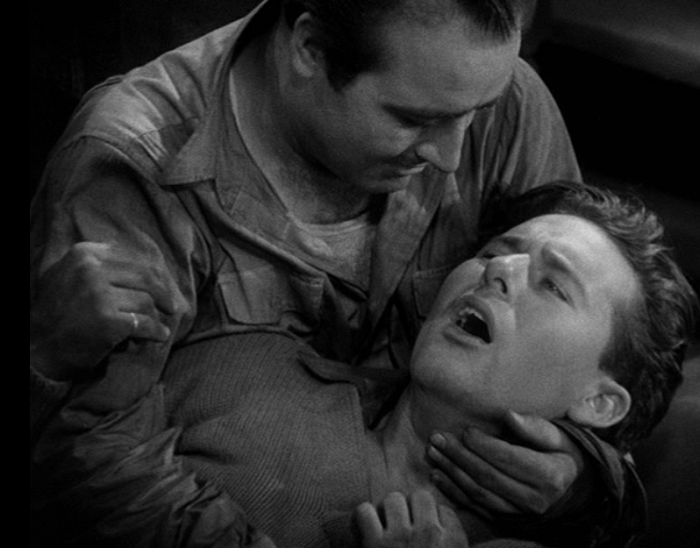
And, again, brothers in arms.
- History on Film discuses how aerial warfare evolved over the first World War. Here’s some interesting info on the film’s zeppelin raid and how that figured into history:
When a Zeppelin targets London, the Rutledge brothers’ squadron is sent to shoot it down. Claiming that they are defenceless unless they out-climb the fighters, the Zeppelin’s captain goes to astonishing lengths to lighten the load, eventually ordering several members of the crew to jump out of the ship. While the sight of crewmen stepping out into the air is chilling to watch, the captain’s fear is inaccurate. The scene is set early in the war, when Zeppelins bombed England with impunity, since even a direct hit caused negligible damage because the tiny bullet holes were unable to deflate the Zeppelins. The initial raids produced relatively few casualties, but the threat of death from the sky understandably spread terror among the British public. However, the situation changed in the fall of 1916 when the pilots were issued explosive ammunition. Although the Zeppelins had started raiding in groups of ten or more, not all of them would make it back to Germany. The thought of a crash understandably terrified the crews, since the entire crew of roughly sixty men would burn to death if a Zeppelin crashed.
- The contemporary review in the New York Times from Mordaunt Hall only mentions the film’s most infamous star in a brief sentence: “Jean Harlow figures as the faithless Helen.”
- A trailer from a re-release of the film (that looks like it has a filter lathered on, unfortunately) —
Awards, Accolades & Availability
- This film is available on Amazon.
Comment below or join our email subscription list on the sidebar! |
||
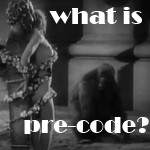 |
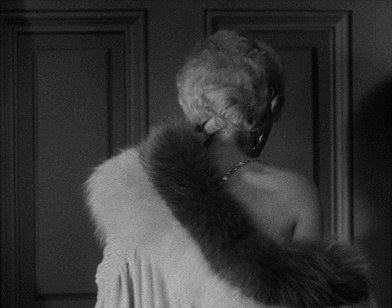 |
 |
 |
 |
|

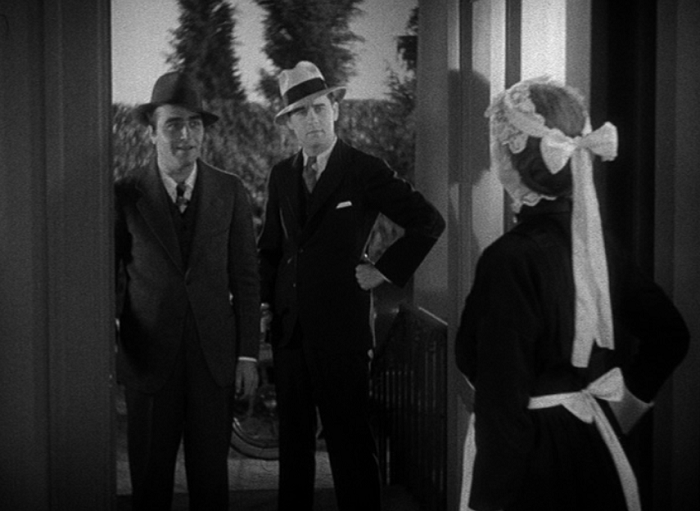

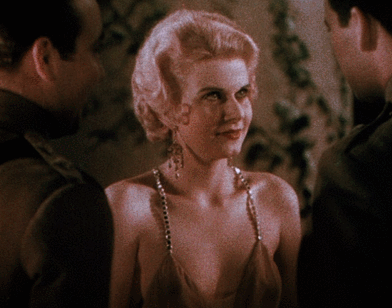
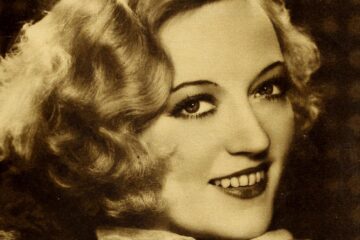
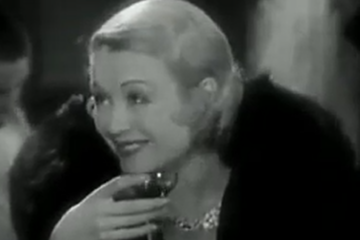
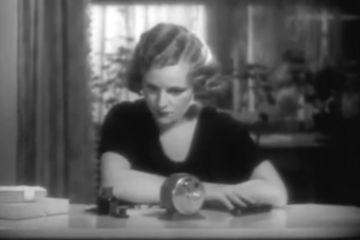
6 Comments
FlickChick · November 17, 2014 at 9:07 am
As always, a fantastic post. I agree wholeheartedly with everything you say here. I am indifferent to the whole affair – except for Harlow She has that star shine that just can’t be denied.
Danny · November 18, 2014 at 12:51 am
Harlow is, indeed, pretty great. I think the footage of her in color here (apparently the only color footage of her in her entire career) is stunning, and makes me wish MGM would have sprung for even two-strip technicolor for one of her other films.
Vanessa B (@callmeveebee) · November 17, 2014 at 11:49 pm
On paper, this film sounds really interesting and worth watching … but on film, it just doesn’t measure up (apart from Harlow’s debut) 🙁
Danny · November 18, 2014 at 12:52 am
Right? It’s kind of a weird mess. I mean, knowing its production history, it’s not hard to imagine why it’s a weird mess. But still.
Silver Screenings · November 19, 2014 at 12:06 pm
I’ve never seen this one all the way through because I just can’t get excited about it. The aerial sequences are amazing, as is Jean Harlow, but they’re not enough to make me stick around.
Your review, however, was top notch.
Danny · November 21, 2014 at 4:29 pm
Yeah, I don’t blame you. It’s been a slog each time I’ve caught it too. Thanks for the compliment! Better luck with better movies, as they say. 🙂
Comments are closed.